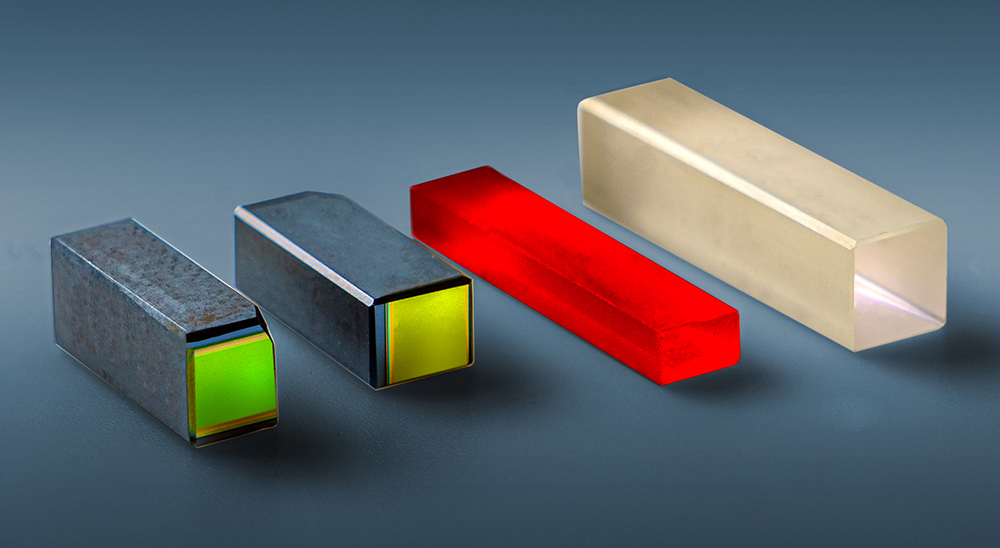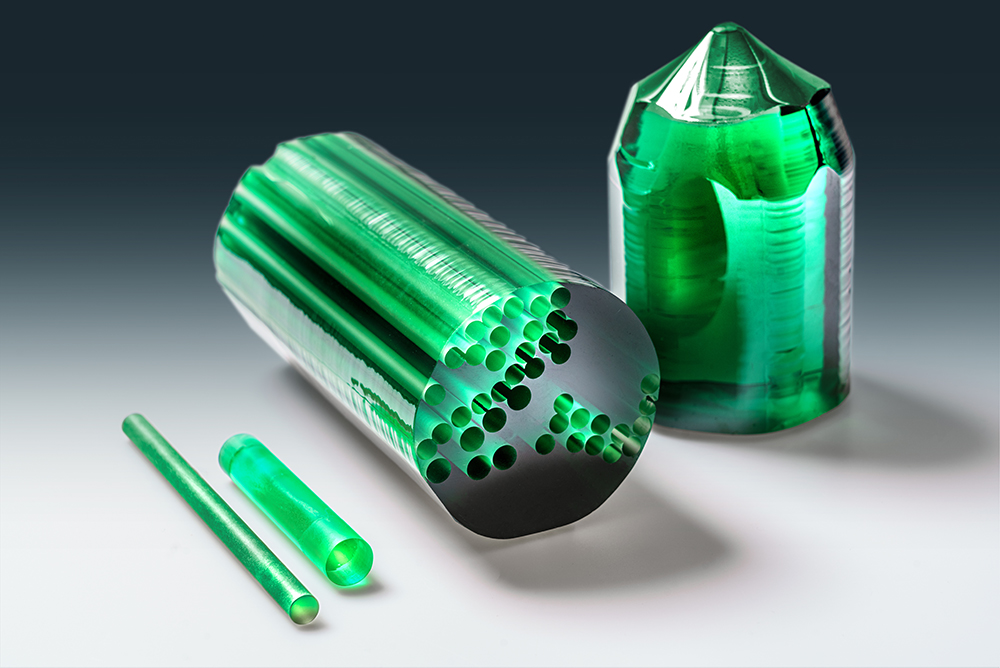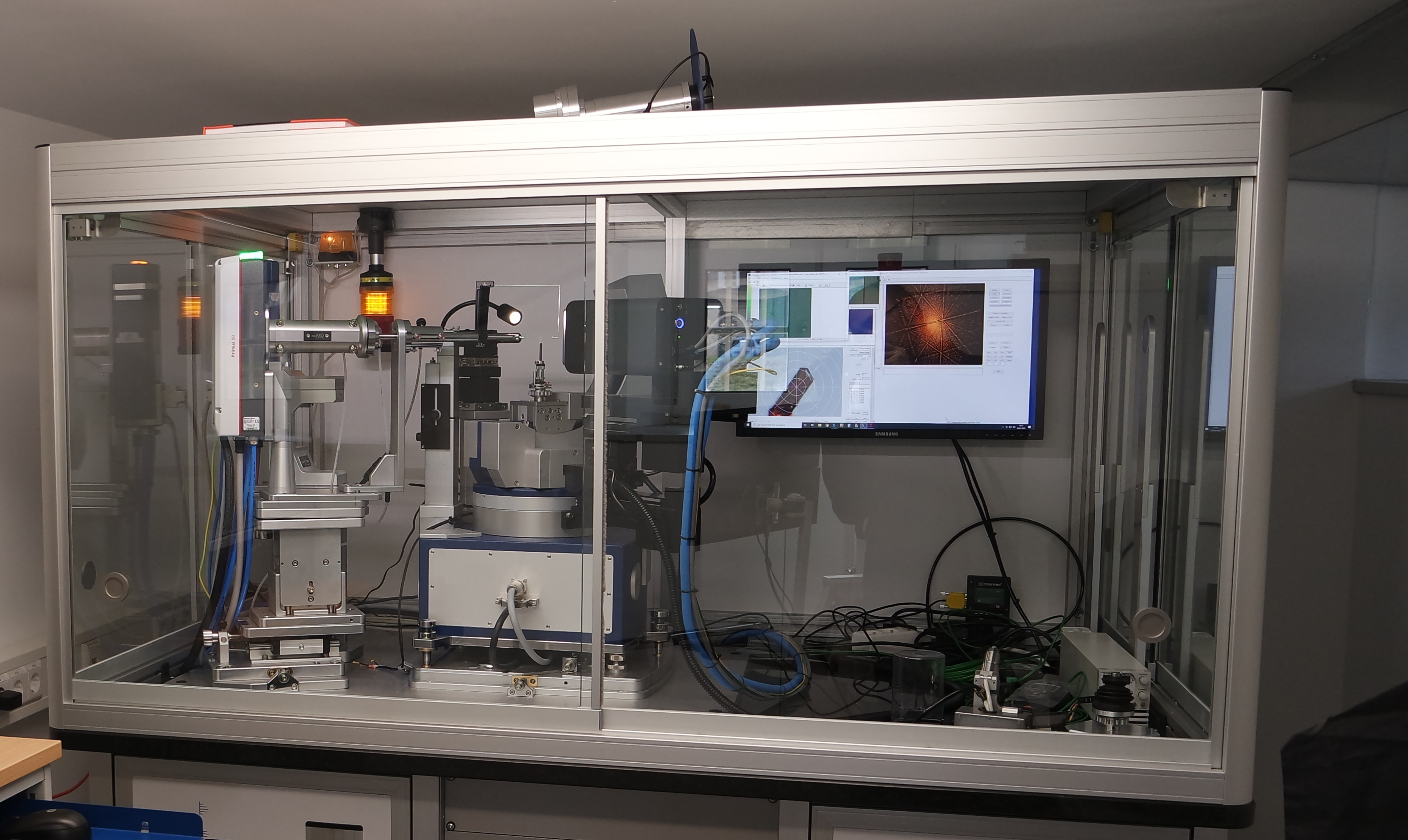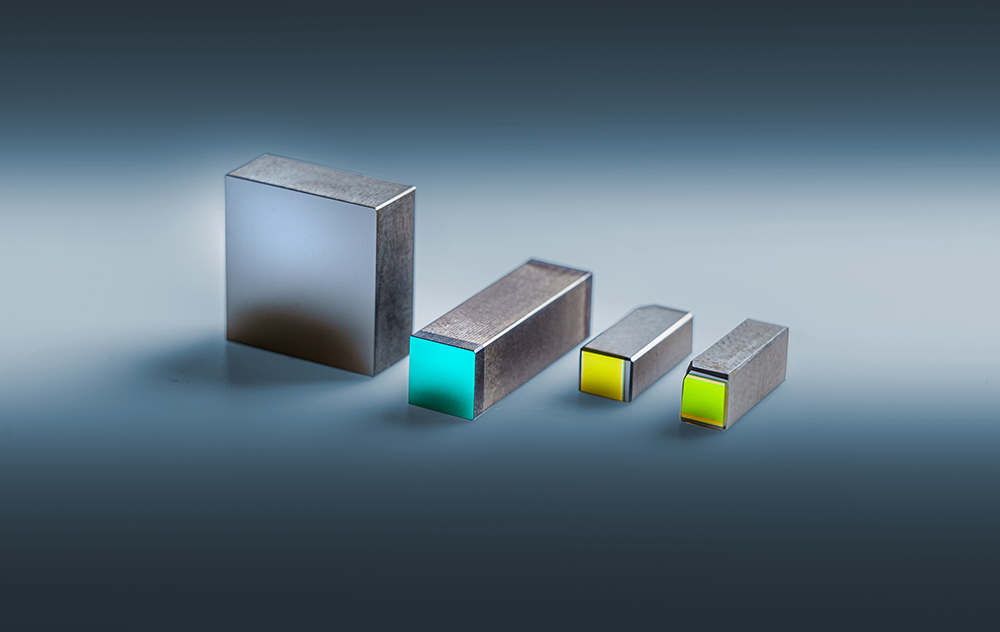


Fraunhofer IOSB is performing research and development of novel coherent sources that are often intended to exceed current limits in terms of power and energy. The requirements on the optical components, especially on the grown crystals used for the generation and conversion of laser radiation, are in consequence high and the crystals available on the market often do not meet these challenging requirements. In addition, certain crystals used in military laser sources are subject to export restrictions on the international market. Availability of suitable materials is therefore severely limited and not guaranteed. In order to achieve technological sovereignty in this field, new and improved materials are being investigated at Fraunhofer IOSB as a basis for further research and development of laser and non-linear sources.
Non-linear optical materials
With the materials currently available, high-power laser radiation cannot be generated efficiently by a laser crystal in the mid- and long-wave infrared range. To circumvent this issue, non-linear optical materials (NLO) are used for down-conversion. This allows the radiation to be adjusted to the desired wavelength. Only certain NLO crystals, which must be transparent and phase-matchable in the corresponding wavelength range, can be used for this purpose. The best results are currently achieved with crystals from the chalcopyrite class.
At Fraunhofer IOSB, synthesis growth and research on new and improved NLO materials is being driven forward owing to a new laboratory infrastructure. Crystals are grown in special tube furnaces, investigated by X-ray diffraction and improved growing conditions are being studied to reach and ensure the highest quality of the crystals. The optical components are cut out from the as-grown crystal boules and polished using dedicated processes to improve the optical damage threshold.
Novel laser crystals
For the generation of laser radiation, crystals from the class of the garnets are currently investigated in particular (figure 2). These laser crystals are rare earth-doped oxide crystals. The performance of laser sources is limited by the physical properties of laser crystals among other limiting factors. At high power, the laser crystal heats up, and temperature differences within the crystal result in undesirable effects like thermal lensing, depolarization and aberrations that negatively affect the beam quality and severely reduce the efficiency of the laser sources.
At Fraunhofer IOSB we are investigating special laser crystals in a modern laboratory environment. To reduce the thermal lensing effect, laser crystals with special dopants and geometries are being studied in specially designed laser sources. In this context, we are investigating the promising approach of developing laser crystals with gradually graded doping.
Research services for customers
A lot of scientific knowledge and expertise from the field of crystal growth will also be made available to Fraunhofer IOSB customers and partners as part of joint research projects in the future. This includes research and development of new NLO and laser crystals, as well as research into improved processing methods in crystal growing. The equipment at Fraunhofer IOSB comprises also specific measurement technologies enabling comprehensive analysis of crystals. X-ray and spectroscopic investigation, interferometry, and the analysis of the laser-induced damage threshold of optical components (at 2 µm and at 3–5 µm) are also available for joint research projects.
 Fraunhofer Institute of Optronics, System Technologies and Image Exploitation IOSB
Fraunhofer Institute of Optronics, System Technologies and Image Exploitation IOSB 